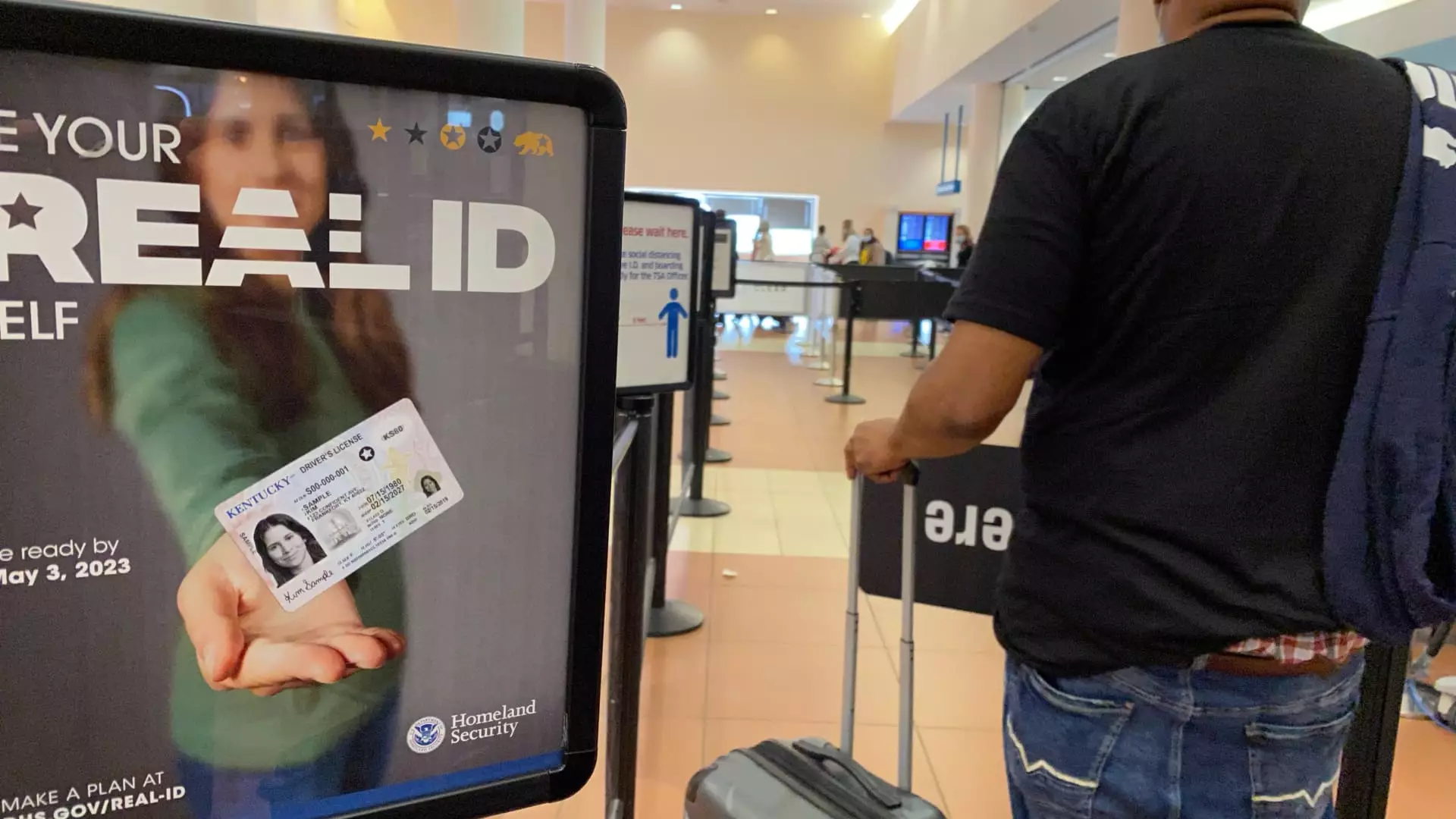In a bold move reflecting the government’s ongoing commitment to enhancing national security, the Real ID requirement is set to come into effect on May 7. For travelers, this means that your traditional state-issued driver’s license may no longer suffice when booking those much-anticipated domestic flights within the United States. Given the tumultuous history of this initiative, it is essential to dissect what the Real ID requirement really means for the average traveler—and the potential pitfalls we should be wary of.
Travelers are now required to possess a Real ID-compliant license or an alternative accepted form of identification, such as a passport or a military ID, to pass through airport security checkpoints. While officials maintain that 81% of travelers already comply, those statistics do not take into account the cumbersome processes currently entangled within state DMV systems, where appointments are reportedly few and far between. This lack of availability raises immediate concerns about access and, quite frankly, fairness in enforcement.
The Chaos of DMV Appointments
Imagine the chaos as the deadline approaches. Individuals are being urged to secure DMV appointments to obtain or upgrade their identification to meet federal standards, only to find waiting times extending into weeks or even months at a time. The urgency that officials are pushing feels akin to a game of Russian roulette—some will likely succeed in their attempts while others are left in the lurch, unable to board flights they’ve planned and saved for. The idea that a government mandate can create such anxiety and confusion for ordinary citizens is nothing short of ludicrous.
When confronted with insufficient resources and overwhelming demand, the shortcomings of this initiative become painfully clear. It seems that the exemption timeline, which has been postponed multiple times since its inception after the September 11 attacks, was not reconciled with the repercussions such mandates would place on the public. It certainly appears the government has initiated yet another complex regulation without a pragmatic plan for its execution, placing undue stress on future travelers.
The Illusion of Security
While the Real ID is presented as a necessary measure for enhancing security, it invites skepticism about its effectiveness. Who is to say that those with real identities will not attempt to bypass these very systems? The sad truth is that many criminals will always find loopholes, and a mere star on a driver’s license will not necessarily provide the level of security that policy-makers promise. The Real ID Act emerged from fear after a national tragedy; it is essential to question whether fear should dictate our approach to security, leading us to introduce measures that primarily inconvenience law-abiding citizens.
Moreover, as many government officials have publicly stated, the threat of increased screening or being barred from security checkpoints looms over those who fail to present compliant IDs. This creates a paradox: in our zeal for verification, we sacrifice convenience and accessibility. People who may not have easy access to the required forms of identification or who live in underserved communities disproportionately bear the burden of this requirement, which inadvertently widens existing social inequalities.
Encouraging Alternatives Over Compliance
Instead of pushing a one-size-fits-all strategy that may further disenfranchise the masses, the government should consider strategies that allow for greater inclusivity. Various alternatives exist for authenticated travel, including passports and green cards, which could ease the burden of the Real ID requirement. However, instead of acknowledging the need for adjustments, officials have taken a more rigid stance that spells trouble for travelers who might otherwise have had access to efficient travel.
While the TSA, represented by its officials, continues to tout the seamless transition promised by the Real ID, it is essential to adopt a critical lens. It seems more prudent to reassess the feasibility of a system that prioritizes compliance over the realities of everyday life. As we edge closer to the impending deadline, one must question whether these measures genuinely make us safer or simply introduce unnecessary barriers to travel that erode public trust in government initiatives.
Ultimately, the Real ID mandate isn’t just about identification; it symbolizes a larger issue: the ongoing tension between safety and freedom. It compels us to reconsider how we define security in a way that genuinely protects citizens rather than alienates them.

